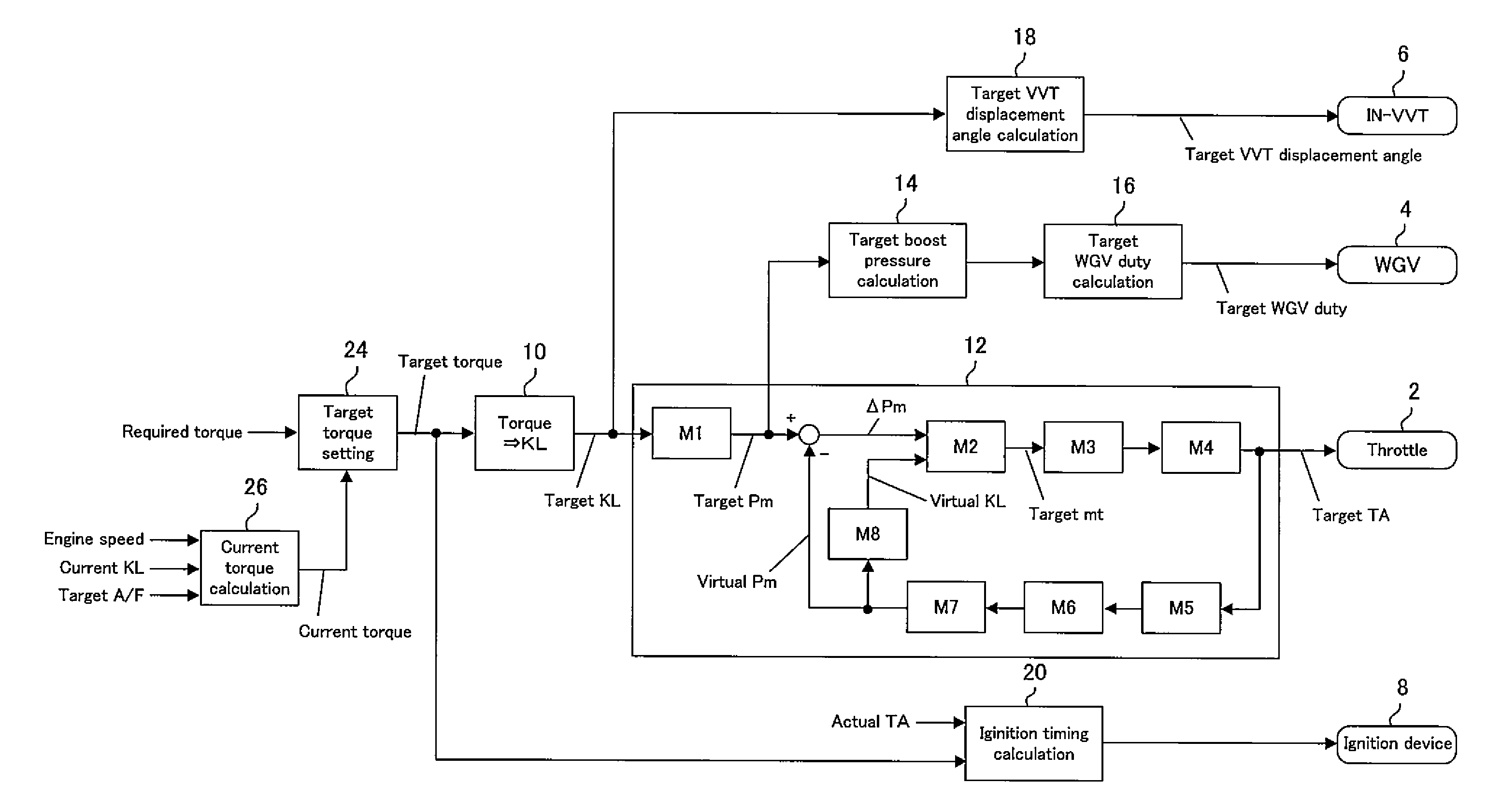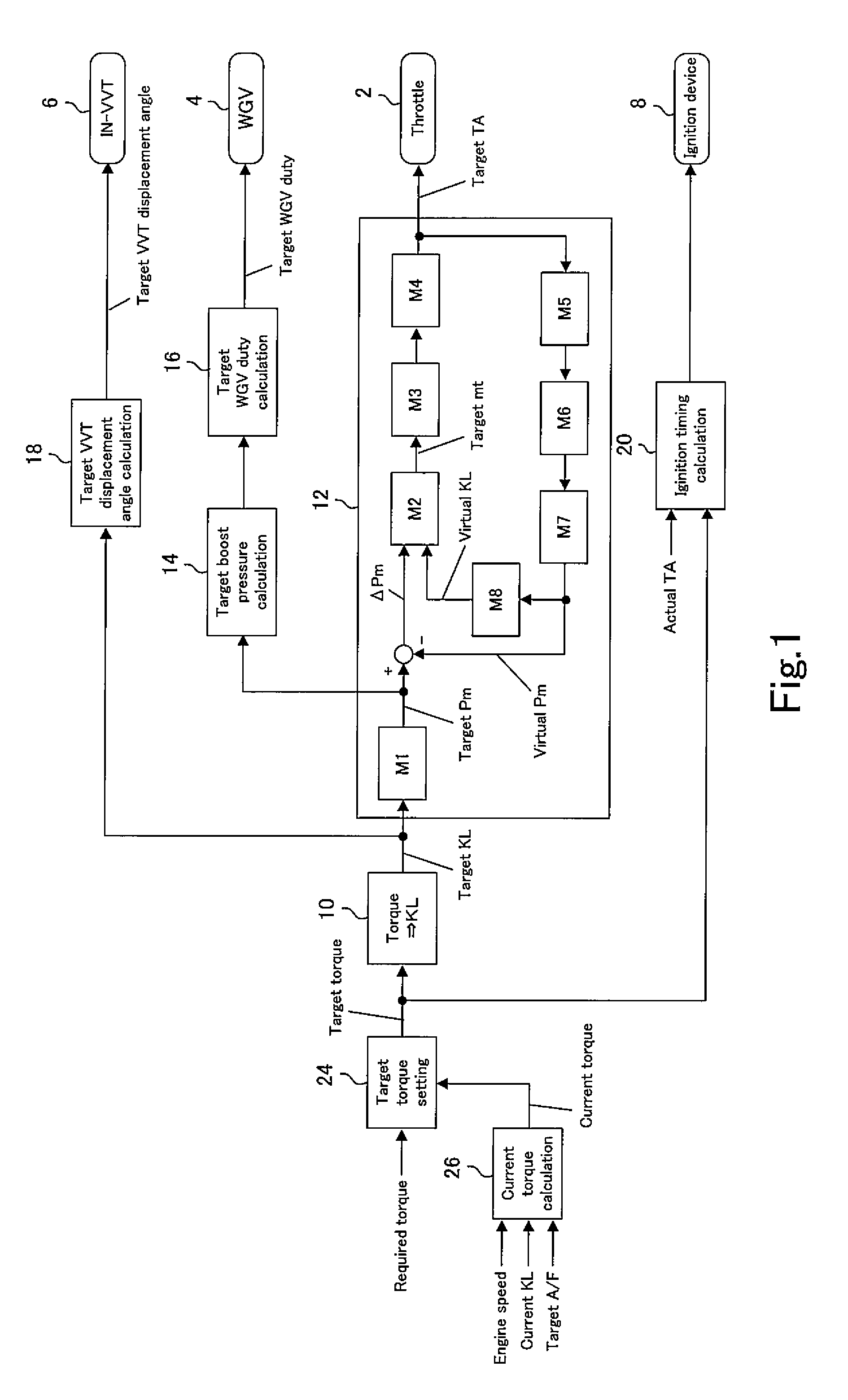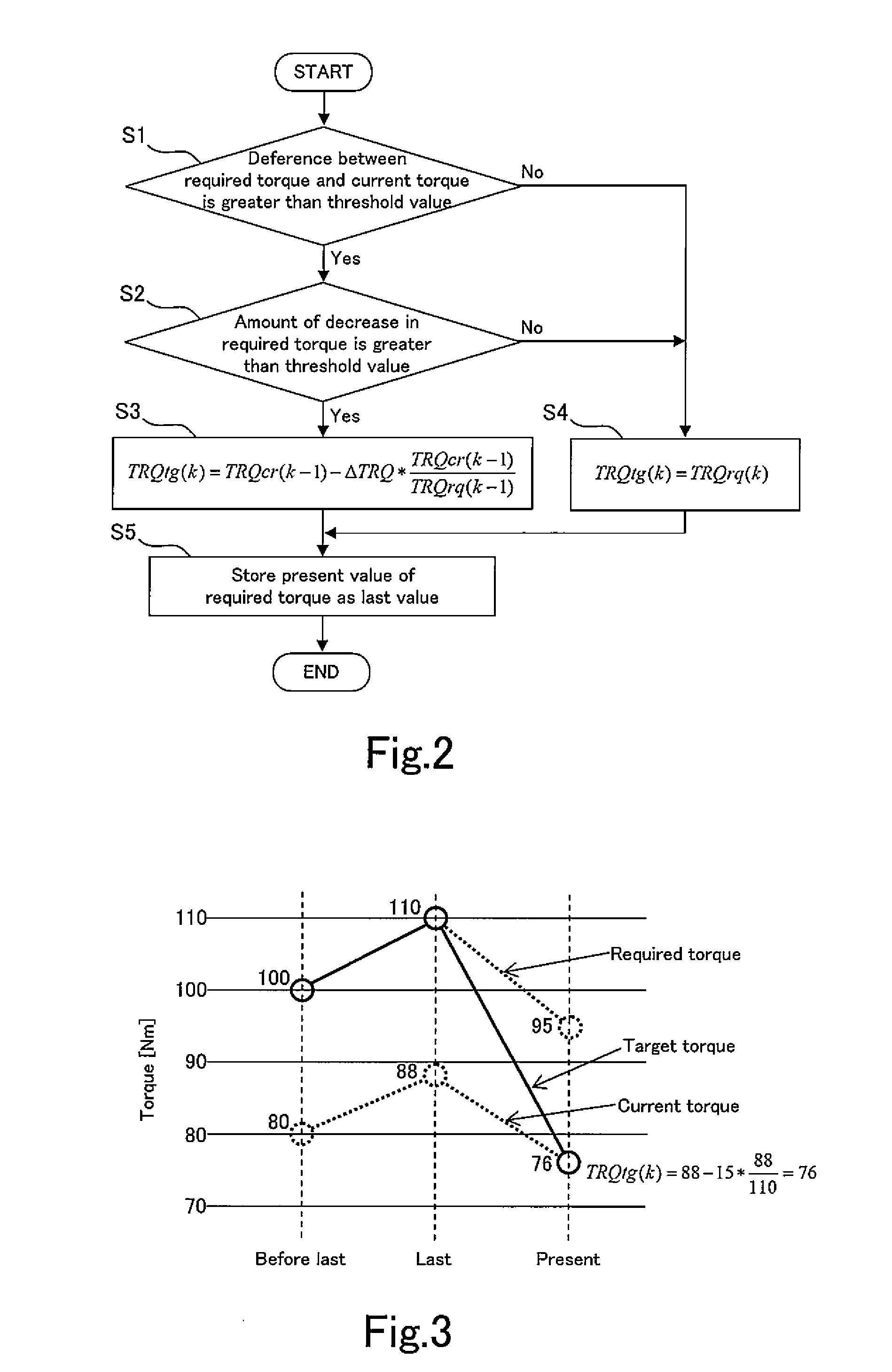Control unit of internal combustion engine equipped with supercharger
a technology of control unit and internal combustion engine, which is applied in the direction of electric control, combustion engine, machines/engines, etc., can solve the problems of large gap between required torque and current torque, insufficient current torque for the required torque, and driver's inability to get the expected feeling of deceleration, so as to reduce the engine output torque
- Summary
- Abstract
- Description
- Claims
- Application Information
AI Technical Summary
Benefits of technology
Problems solved by technology
Method used
Image
Examples
first embodiment
[0027]The first embodiment of the present invention will be described with reference to the drawings.
[0028]An internal combustion engine which the control unit of the present embodiment is applied to is a supercharged internal combustion engine for a vehicle, in particular, a spark ignition type four-cycle reciprocal engine equipped with a turbocharger, in more detail, an internal combustion engine having an electronic-controlled throttle (hereinafter referred to as throttle simply), a variable valve timing apparatus changing valve timing of an intake valve (hereinafter referred to as IN-VVT), and a waste gate valve (hereinafter referred to as WGV). The control unit is implemented as a function of an ECU (Electronic control unit) which is provided to the internal combustion engine. For details, the ECU functions as the control unit when a program stored in a memory is executed by a CPU. When the ECU functions as the control unit, the ECU controls the operation of each actuator inclu...
second embodiment
[0057]Next, the second embodiment of the present invention will be described with reference to the drawings.
[0058]FIG. 5 is a functional block diagram showing a configuration of the control unit of the second embodiment of the present invention. The control unit of the second embodiment corresponds to a partially modified configuration of that of the first embodiment. Therefore, among the elements constituting the control unit of the second embodiment, the elements having functions common to that of the first embodiment are assigned with the same reference numerals in the figure. Hereinafter, whereas describing functions in common with the first embodiment will be simplified or omitted, the configuration of the control unit of the second embodiment will be described with a focus on functions different from the first embodiment.
[0059]The difference between the control unit of the second embodiment and that of the first embodiment is in a torque value used for setting respective targe...
third embodiment
[0063]Next, the third embodiment of the present invention will be described with reference to the drawings.
[0064]FIG. 7 is a functional block diagram showing a configuration of the control unit of the third embodiment of the present invention. The control unit of the third embodiment corresponds to a partially modified configuration of that of the second embodiment. Therefore, among the elements constituting the control unit of the third embodiment, the elements having functions common to that of the second embodiment are assigned with the same reference numerals in the figure. Hereinafter, whereas describing functions in common with the second embodiment will be simplified or omitted, the configuration of the control unit of the third embodiment will be described with a focus on functions different from the second embodiment.
[0065]The difference between the control unit of the third embodiment and that of the second embodiment is in a torque value used for setting respective target...
PUM
 Login to View More
Login to View More Abstract
Description
Claims
Application Information
 Login to View More
Login to View More - R&D
- Intellectual Property
- Life Sciences
- Materials
- Tech Scout
- Unparalleled Data Quality
- Higher Quality Content
- 60% Fewer Hallucinations
Browse by: Latest US Patents, China's latest patents, Technical Efficacy Thesaurus, Application Domain, Technology Topic, Popular Technical Reports.
© 2025 PatSnap. All rights reserved.Legal|Privacy policy|Modern Slavery Act Transparency Statement|Sitemap|About US| Contact US: help@patsnap.com



